Space dwellings: how we will live in space
The major powers have already implemented several programs involving a long-term human presence on board the spacecraft. Fifteen years around the Earth rotates the International Space Station. But can such projects be called a full-fledged settlement? People are able to live in conditions of microgravity and severe mental stress for a year, but the stations are not adapted for permanent life in terms of crew health, and there is no talk about childbirth and birth. The stations are not fully autonomous, they need a constant flow of cargo from the Earth.
To create a real space settlement, it is necessary to develop internal systems to ensure and protect against radiation and foreign objects, to create artificial gravity. At the current level of technology development, this will cost a huge amount of resources.
Let's take a look at how scientists and fiction writers of the past imagined such settlements, and what projects mankind can realize in the near future.
')
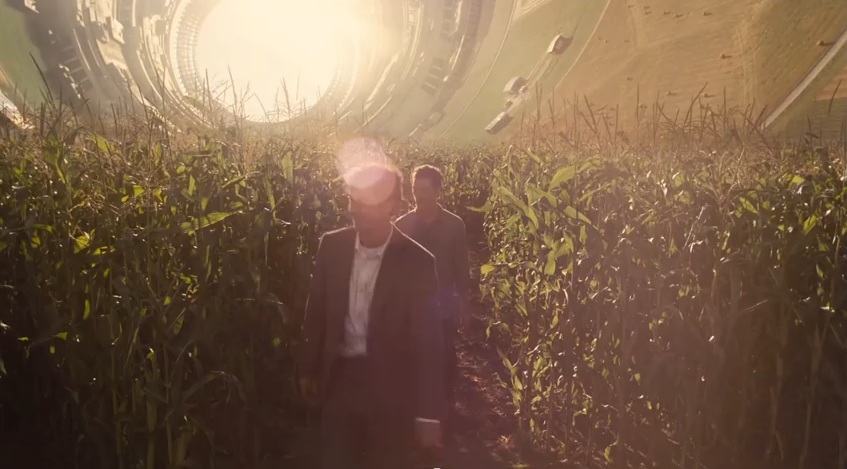
Frame from the film "Interstellar"
In 1869, the American writer Edward Everett Hale for the first time in the literature described the space settlement. In the story, published in the monthly magazine The Atlantic, he talked about a spacecraft sent to near-earth orbit in the form of a brick sphere with a diameter of sixty meters. Accidentally, this artificial satellite of the Earth, created to help mariners in navigation, was sent into space with people. And these people survived, forming the first space colony. The work is called "Brick Moon".
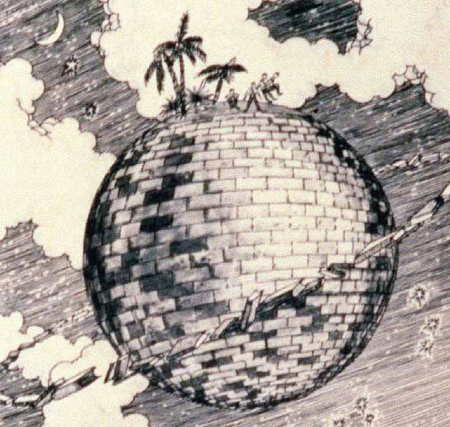
Fifty years later, Konstantin Tsiolkovsky published a book, Out of the Earth, about cosmic colonists. He first spoke about the need for plant growing in space and on other planets , described the method of creating artificial gravity, and said that it would solve most of the medical problems of space travelers.
 Tsiolkovsky used the concept of "air settlements". He believed that the population of the new planets would live on the planets only a part, and a belt of cars, vehicles and buildings would form around them — a moving swarm in the form of a ring. For the construction of settlements, he proposed to use the material of the planets and asteroids. The settlements will consist of station modules, gradually being tied together like a necklace of beads. On Earth, modules will be built and tested, and then sent to orbit. “The rockets were built and equipped according to the pattern already described. Thousands of them flew from the Earth one after another - with a roar, thunder, throwing out bundles of light and causing the crowd to delight. At first, only scientists, technicians, engineers, and craftsmen were sent to them: the people are exceptionally healthy, young and energetic, all builders, ” wrote Tsiolkovsky.
Tsiolkovsky used the concept of "air settlements". He believed that the population of the new planets would live on the planets only a part, and a belt of cars, vehicles and buildings would form around them — a moving swarm in the form of a ring. For the construction of settlements, he proposed to use the material of the planets and asteroids. The settlements will consist of station modules, gradually being tied together like a necklace of beads. On Earth, modules will be built and tested, and then sent to orbit. “The rockets were built and equipped according to the pattern already described. Thousands of them flew from the Earth one after another - with a roar, thunder, throwing out bundles of light and causing the crowd to delight. At first, only scientists, technicians, engineers, and craftsmen were sent to them: the people are exceptionally healthy, young and energetic, all builders, ” wrote Tsiolkovsky.
I thought Tsiolkovsky and about space agriculture . He described the conservatories in Starfish Goals as follows: “Imagine a long conical surface or a funnel, the base or wide opening of which is covered with a transparent spherical surface. It is directly facing the Sun, and the funnel rotates around its long axis (height). On the opaque inner walls of the cone there is a layer of wet soil with plants planted in it. ”
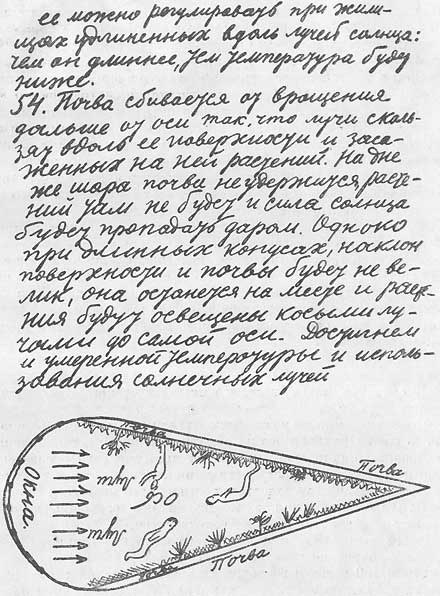
The manuscript of K.E. Tsiolkovsky "Space Travel Album", 1933. A source
Austrian Herman Potochnik published at the end of 1928 under the pseudonym Noordung the book “The Problem of Traveling to World Space”. Potochnik described in detail the orbital station with artificial gravity, its assemblies, equipment, including the water treatment system, described the structure of the spacesuit, its thermal insulation, life support installation, breathing and radio communication. It is worth saying that in the 1920s the miniature radio transmitter was fantastic.
Below is an illustration from Potochnik’s book, the space station “Wohnrad”, whose name was translated into Russian in 1935 as “Wheel for housing”. A torus-shaped module with a diameter of 20 meters imitates gravity due to rotation. The station is equipped with a mirror-heat exchanger of the power plant. According to Noordung, at this station it will be possible to deal with the mapping of hard-to-reach areas of the Earth, to observe possible disasters and hazards. The station will also provide communication.
For energy, the station uses a parabolic mirror that concentrates solar energy and turns it into electrical energy. The same equipment is used to communicate with the Earth using light and radio signals.
It's amazing how accurately Potochnik described the life of future astronauts. He wrote that they would have to give up washing, that only rubbing with wet sponges or towels would be possible. In addition, he believed that important muscle groups, due to their prolonged non-use, would weaken and stop serving, but "this could be successfully counteracted by systematic exercises of the muscular system."
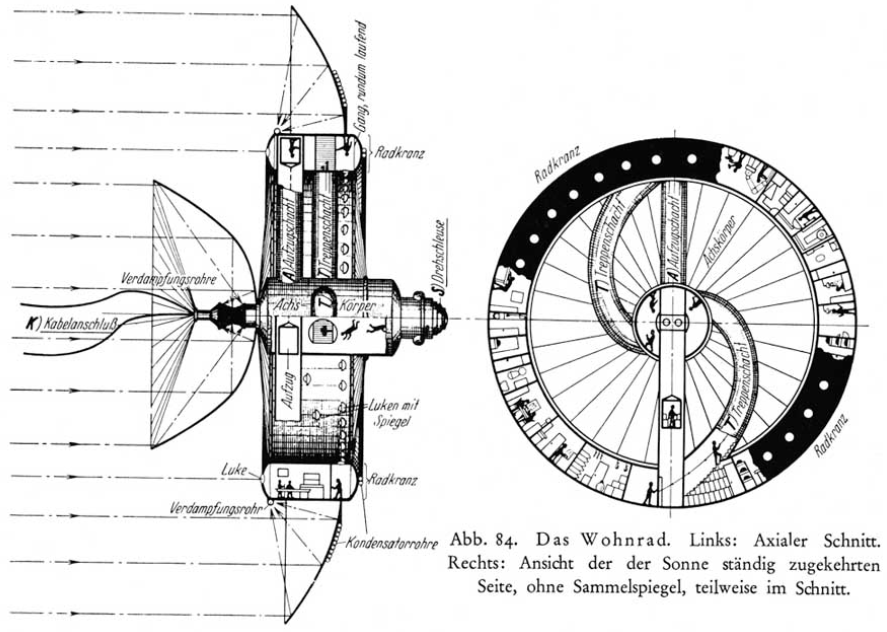
In 1929, John Desmond Bernal designed a station project in which people would live in a sphere filled with air with a diameter of 500 meters. At the station could live up to thirty thousand people.
A sphere spinning at a speed of 1.9 revolutions per minute would provide gravity of 1g.
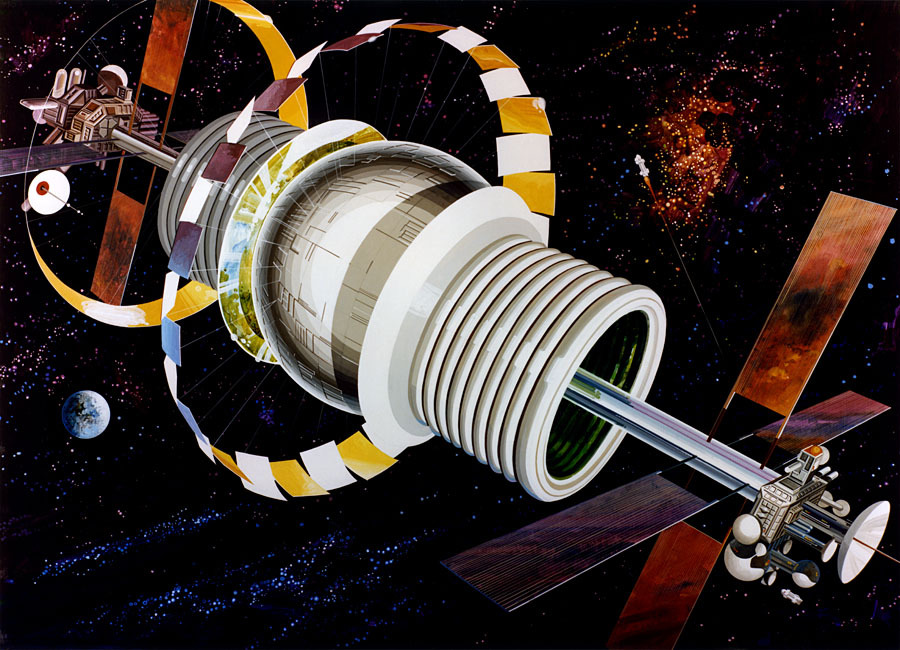

American physicist Gerard O'Neill described the colonization of space in his book The High Frontier of 1975. His station consisted of two cylinders 8 kilometers in diameter and 32 kilometers long, connected by a bearing system. Rotating in opposite directions, the cylinders inside them created artificial gravity - again using centrifugal force. This station, he called the "Island III". In addition to this project, he described “Island I”, a rotating sphere of half a kilometer diameter, where people could live in the equatorial region — this was a modernized version of the Bernal sphere. The project "Island II" was a sphere of 1600 meters in diameter.
Building a station of this size would require a huge number of spacecraft launches. In the 1970s, taking into account the experience of the space industry, it was already possible to calculate. Therefore, O'Neill suggested using materials transported from space - including from the moon. He offered to send cargoes to the construction site with the help of an electromagnetic catapult .
On the inner surface of the cylinder it will be possible to place forests, animals and birds, lakes and rivers. First, it will be necessary to spin the cylinders for three years, a constant power of 360 MW will be needed. In the cylinders it will be possible to control the seasons, control the temperature of the climate. The professor has calculated that the mass of the station will be 500,000 tons, and 2,000 people will build it.
In the film Interstellar, a large-scale space station is presented, corresponding to the idea of an O'Neill cylinder.
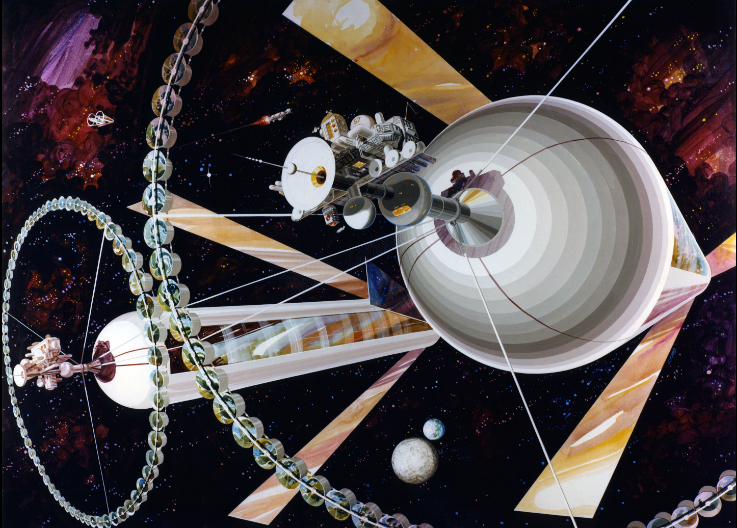
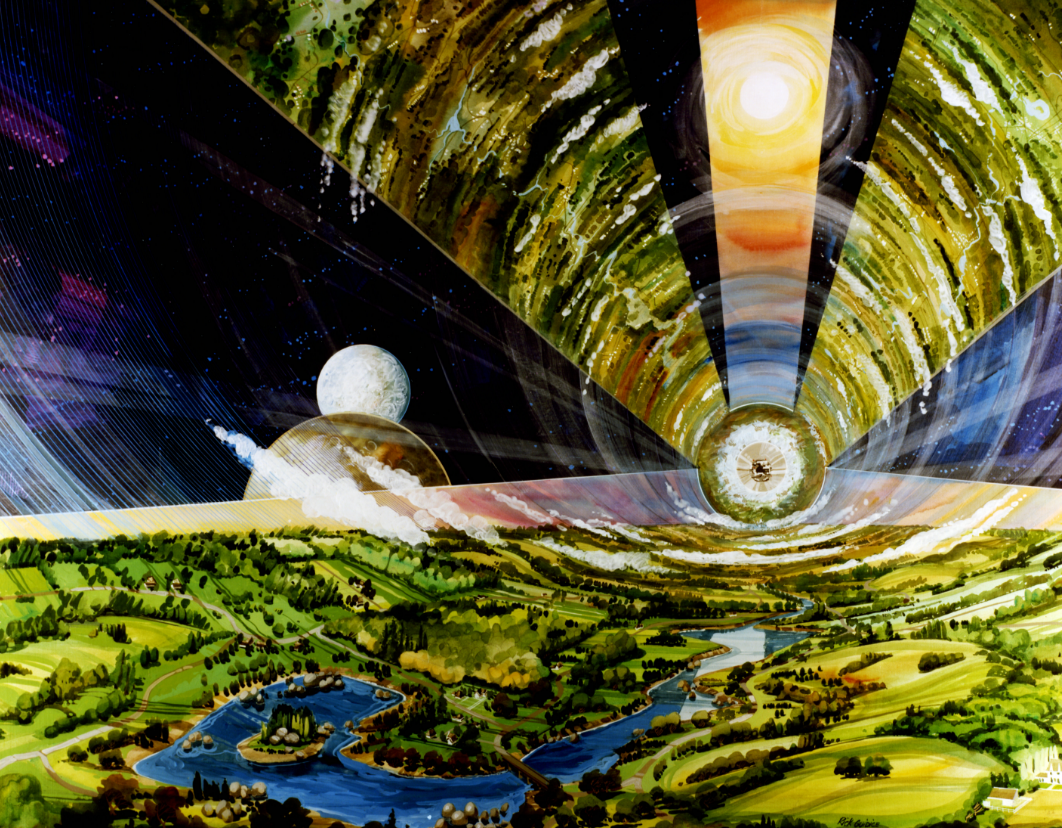
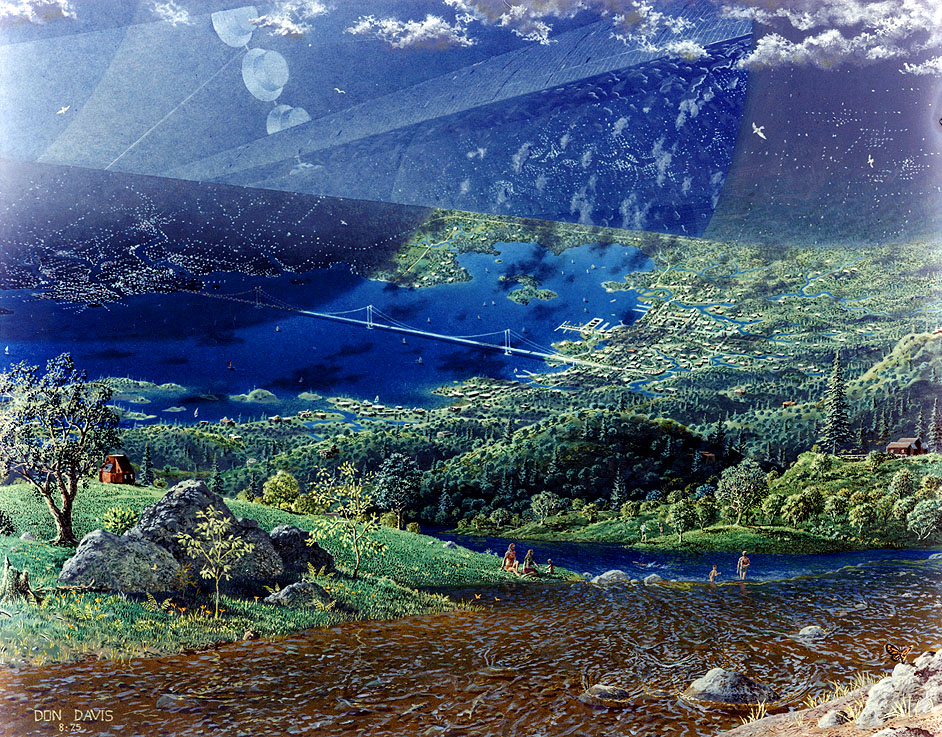
Below is the cover of the magazine "Technology - Youth" for 1965. In this figure, we see some kind of O'Neill project developed after a few years. In Arthur Clarke’s 1973 Rama Date book, the author describes a space object within which people find oxygen, water, and all the conditions necessary for human habitation.
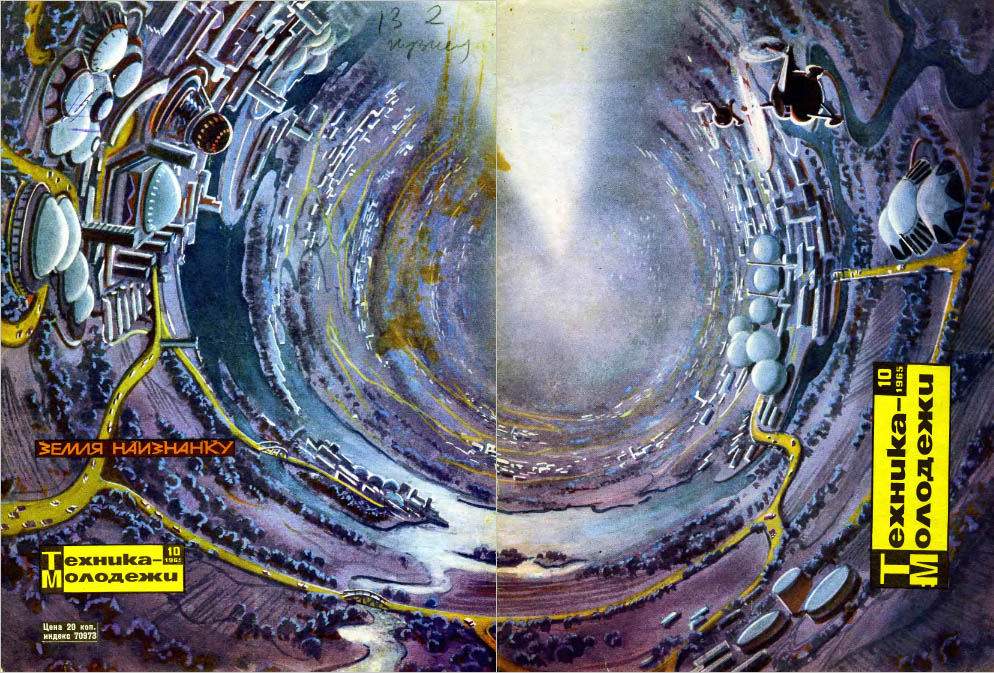
Students at Stanford University in 1975 offered NASA a project of a space settlement in the form of a torus. He was called so - Stanford torus . This project is based on the ideas of Herman Potocnik. The center of the base was a fixed mirror for reflecting sunlight on a rotating ring of secondary mirrors, which provide people living in a rotating greenhouse with light from inside the rotating torus.
The rotation of the torus should provide artificial gravity of about 0.9-1g, which will avoid medical problems associated with microgravity. Given the diameter of such a ring, it will be possible not to worry about the strength of Coriolis, because of which astronauts will rock when moving in the direction of rotation of a similar object. "Spokes" of this huge wheel will be used to move people and goods to the axis and back. The “hub” will be ideal for a spacecraft receiving docking station, since there will be no artificial gravity here, this is a fixed module.
According to the project, such a station should accommodate ten thousand people with a torus diameter of 1.8 kilometers. At the station it will be possible to place farms and forest park zones, that is, to create an artificial ecosystem suitable for long-term human habitation.
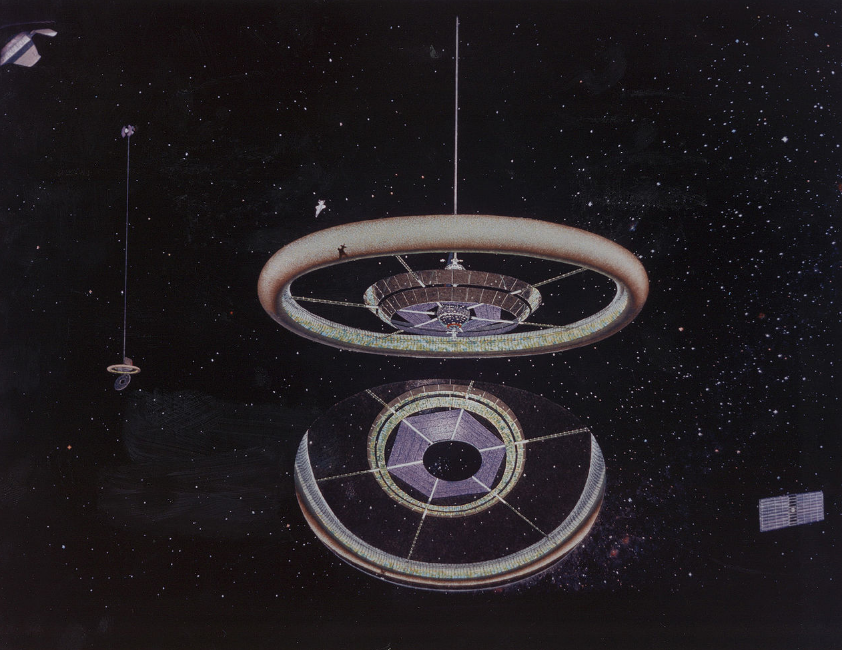
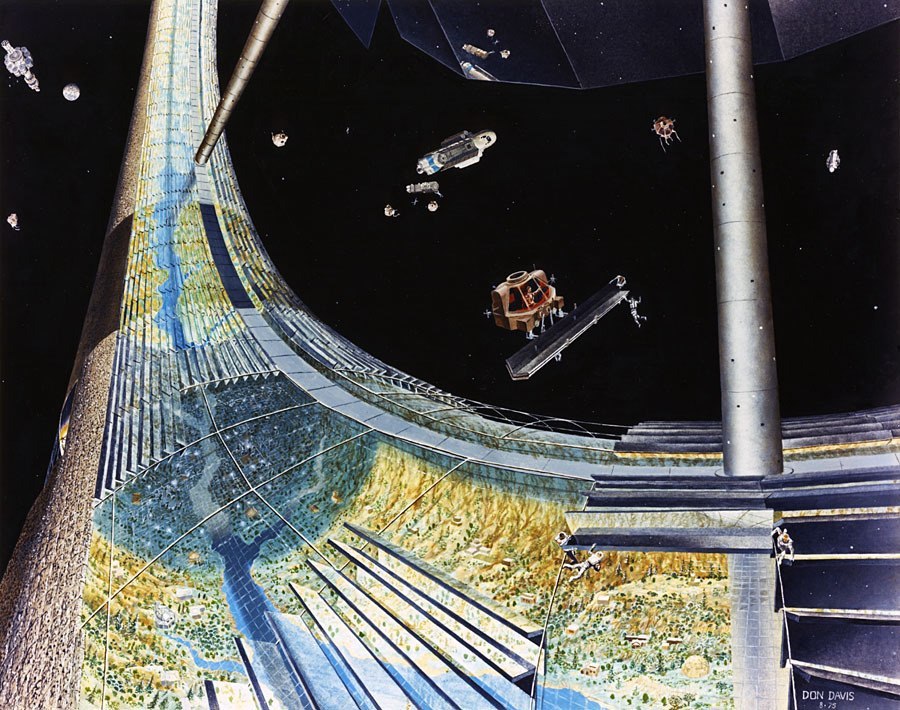
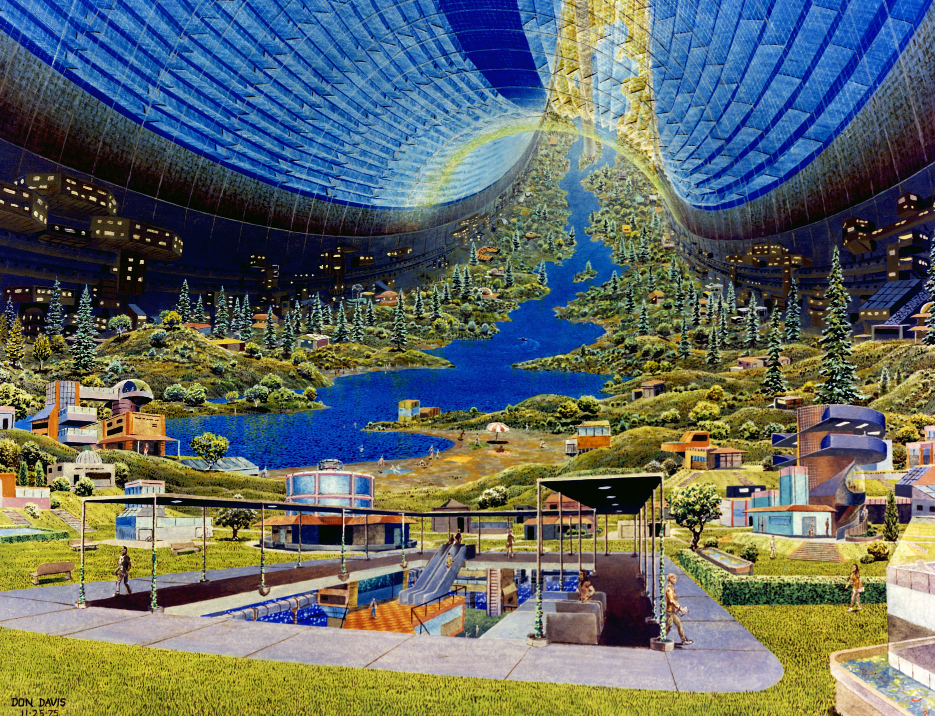
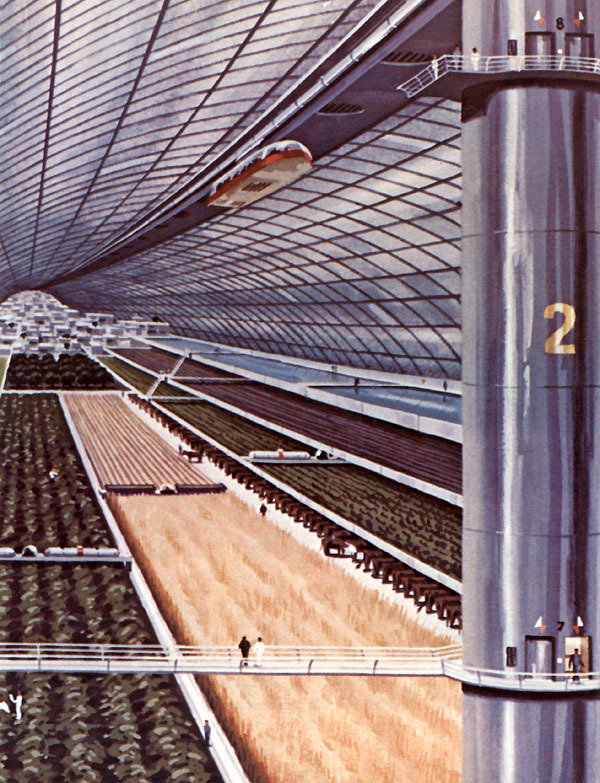
In feature films and animated films one can find many examples of space stations in which gravity is recreated using centrifugal force. In a series of novels by Arthur Clark, "Space Odyssey" described "Discovery One", within the scope of which there is a "carousel" with a diameter of 11 meters, rotating at a speed of about five revolutions per minute. In the anime series Planetes, the ISPV-7 space station has huge rooms with familiar earth gravity. The living area and the area for crop production are located in two tori rotating in different directions. In the film Martian, the ship Hermes has a rotating torus in the center.
But the cost of such decisions at the moment remains cosmic. Enthusiasts calculated how much it would cost to send components into space for the ship "Elysium" from the movie of the same name. To put into orbit a million tons of cargo, you need to make 18,382 SpaceX Falcon launches, which will cost $ 1 trillion 650 billion - this is one hundred annual NASA budgets.
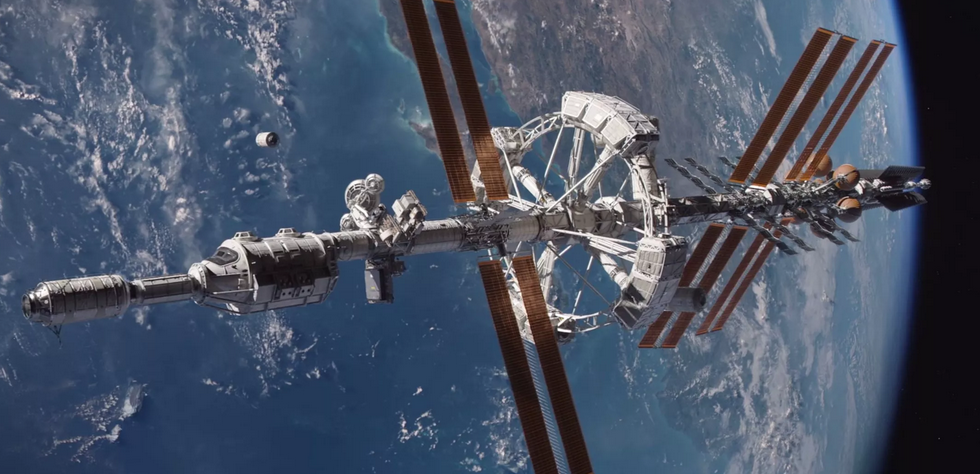
For the first time, astronauts were sent for a long stay in space in 1971 to the long-term orbital station Salyut. The station was in orbit for 176 days, after which, on October 11, 1971, at the command of the MCC, it descended from orbit and was submerged in the Pacific Ocean.
The astronauts at the Salyut-1 orbital station lived and worked mainly in the working section, which is a cylinder with a diameter of 2.9 meters and a length of 3.5 meters, connected to a cylinder with a diameter of 4.15 meters and a length of 2.7 meters. Inside these cylinders a frame was installed, forming a square with an internal cross section. The frame was covered with panels painted in different colors so that the astronauts could recognize the conditional floor, walls and ceiling.
A control post, a rest area, storage and eating places and sleeping places were placed in a small-diameter cylinder. The large-diameter cylinder had scientific equipment, exercise equipment for sports, and a shower. In a separate compartment was a space toilet .
The station was intended for the stay of three astronauts. Unfortunately, the work of the station was associated with tragedy: out of 176 days, only 23 days were people on it, and they died while descending on the Soyuz-11. The rest of the time the station worked in unmanned mode.
The station demonstrated the bottlenecks of the project, which were later corrected in subsequent “Salutes”. The second DOS in 1973 was not operated in a manned mode, but Soviet and foreign cosmonauts worked at stations from Salyut-3 to Salyut-7 until 1991, with the last station orbiting 3216 days, of which 816 days with astronauts on board. This series of stations served as the basis for the Mir orbital complex and for the Russian segment of the International Space Station.
The orbital complex "Mir" has been working for not about nine, but fifteen years. In this case, the originally planned service time was five years. One hundred and four cosmonauts from twelve countries visited the station.
Although orbital stations cannot be called space colonies, they are necessary for the development of future settlements, including the creation and refinement of life support systems. The stations allow scientists to identify the best practices of space architecture. One of the most important techniques is station modularity.
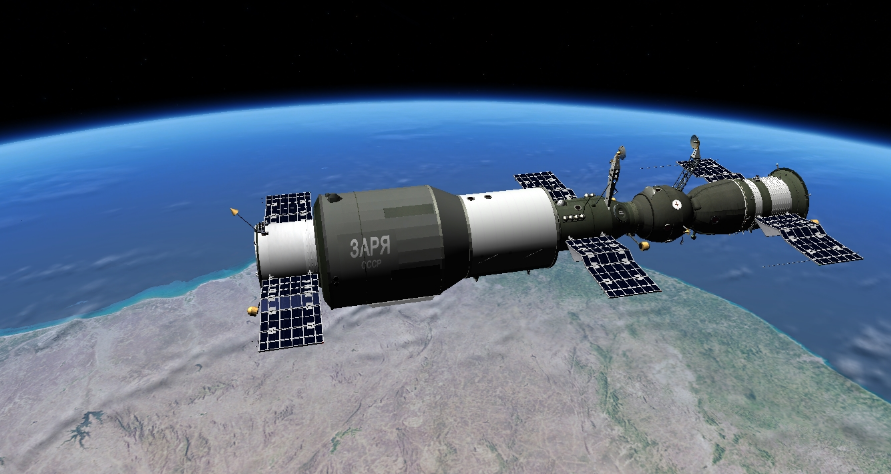
On the body of the station "Salyut-1" flaunted the name "Dawn". The station was called differently, having learned that the name is occupied by a Chinese satellite
Now the International Space Station is moving around the Earth. An inflatable module with artificial gravity was developed for it, but it was never put into practice. One of the reasons for this is that such a module would deprive the ISS of meaning, because the station is a microgravity laboratory. The module in its implementation would be a demonstration prototype of the ship Nautilus-X .
Nautilus-X was presented in 2011 as a vehicle for a long stay of a team of six people in the exosphere. The developers assumed that the construction of the ship would cost 3.7 billion dollars and take 64 months.
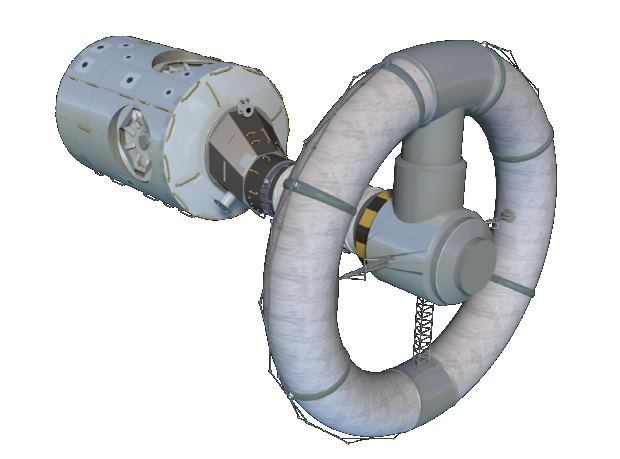
The concept of an inflatable module with microgravity for the ISS.
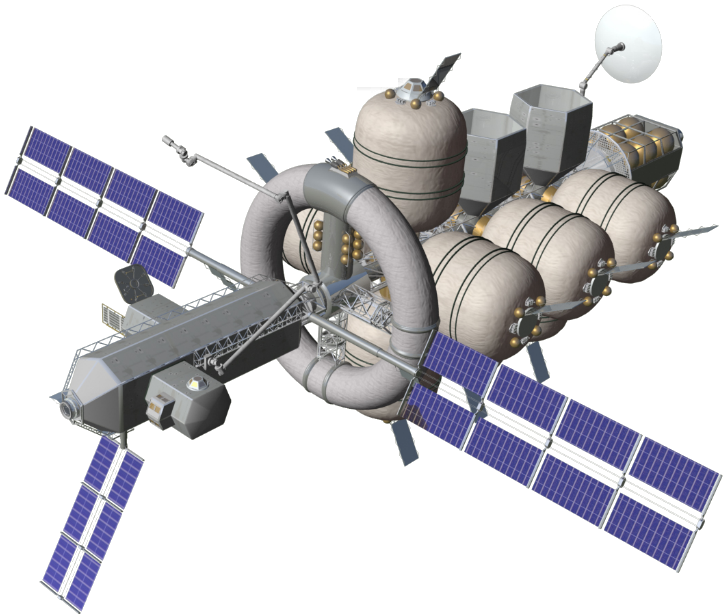
Nautilus-X Concept
Today, the development of space housing has already entered into the programs of some universities. The International Center for Space Architecture, Sasakawa, based at the University of Houston offers a master's program in the specialty "Space Architecture". International Space University in Europe explores the architecture of spacecraft. The Technical Committee on Space Architecture works on the basis of the American Institute of Aeronautics and Astronautics.
In the near future, we are waiting for space settlements, far from shown in science fiction films. A commercial module may appear on the International Space Station. It may be inflatable, and will be used for scientific research and space tourism. Speech about the creation of artificial gravity is not going, it will just be another module that differs from the existing ones only by purpose and cheating .
One inflatable module on the ISS has already been deployed , it was developed by Bigelow Aerospace. Such a module is nine times lighter than a conventional aluminum module. Put it into orbit easier than the standard, which is displayed in space in parts. The ability of the BEAM module to withstand the conditions of outer space and maintain a comfortable human environment inside is being tested now.
Robert Bigelow, founder of Bigelow Aerospace, made a fortune in the hotel business and began to dream of an orbital hotel. On July 12, 2006, the company launched the Genesis I module, which successfully doubled in a 500 km orbit. A year later, after him, Genesis II was sent with 22 video cameras and various items using the program “Fly your stuff”, in which any person could put a small item aboard the module for $ 295. And after that, in 2016, the inflatable module was deployed on the ISS. On June 6, 2016, the module was entered by the Russian cosmonaut Oleg Skripochka and the American astronaut Jeffrey Williams and placed equipment for measuring parameters in it. Only for a few hours a year, people will enter the inflatable module; the rest of the time, the equipment will monitor its condition.
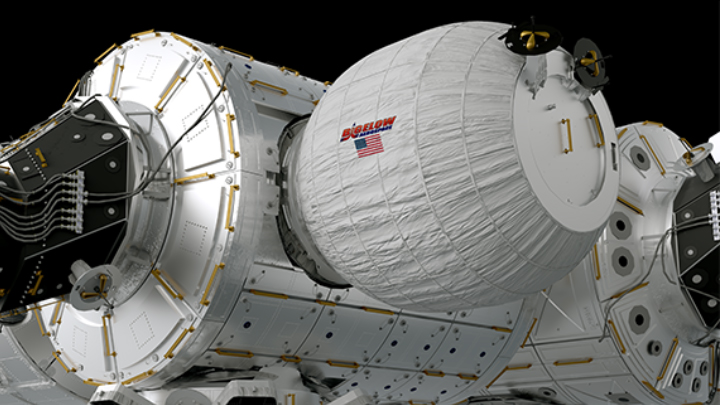
In 2016, the Russian company Orbital Technologies planned to start operating a space hotel, a commercial space station where alcohol would be banned. Judging by the lack of news on this topic over the past couple of years, while the program remains in the project.
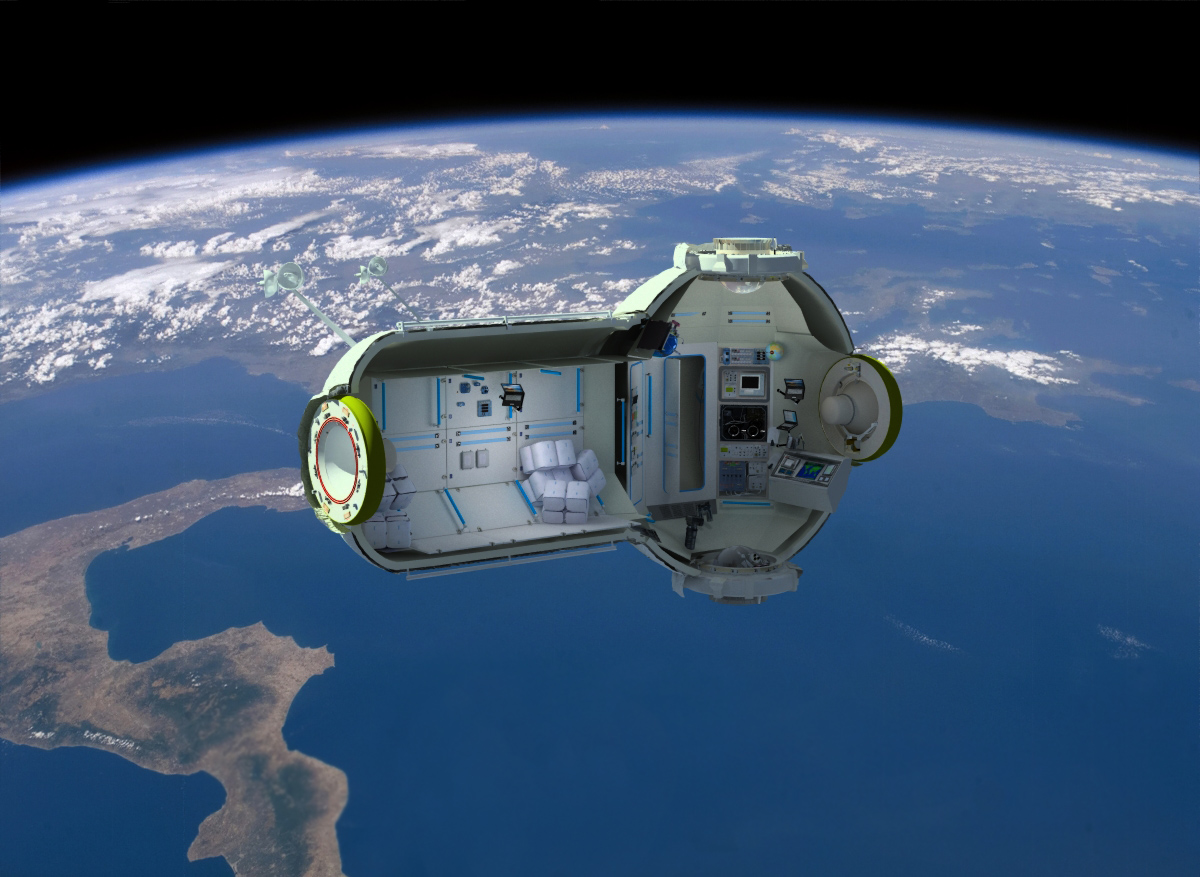
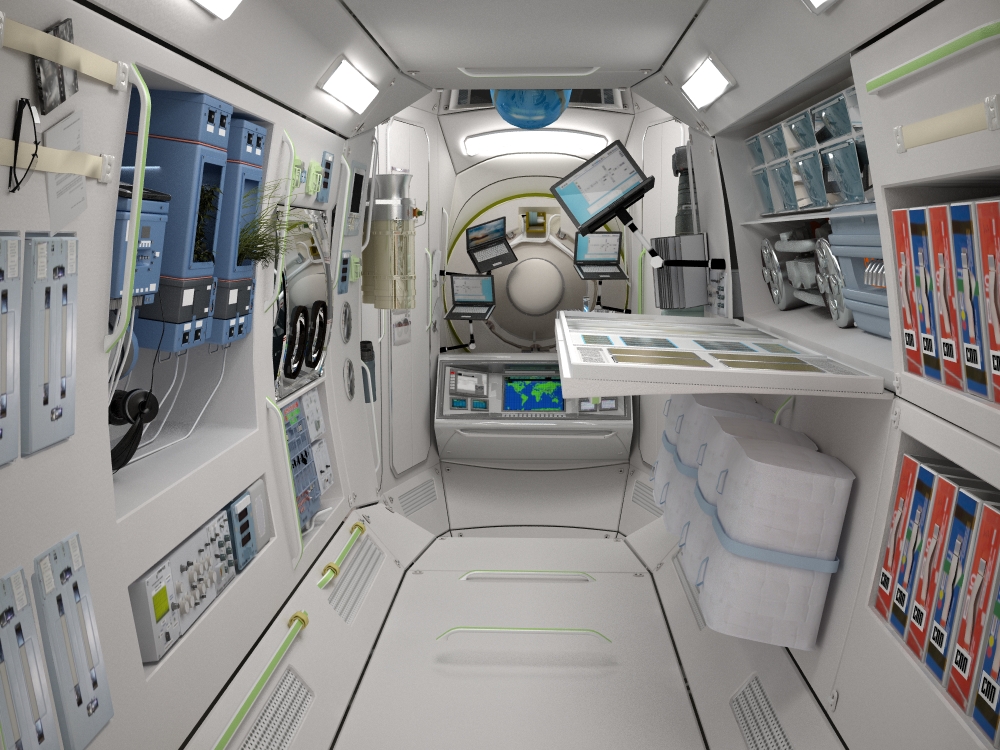
Similar fate and the American Excalibur Almaz. In 2012, a private company gave a presentation to the British Royal Aeronautical Society and announced that in 2015, it would launch tourist space flights flying around the moon. The plans were to offer customers a weekly flight at the station, assembled from decommissioned Soviet modules . Not yet.
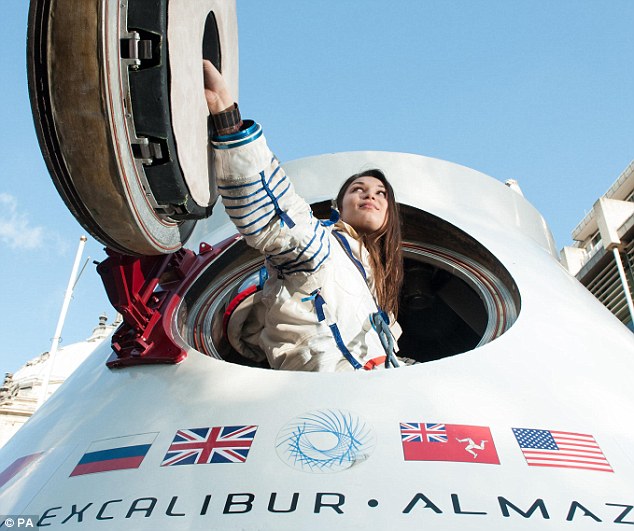
The project closest to science fiction is offered by an American company headed by Mike Saffredini, a former NASA employee responsible for the work of astronauts at the International Space Station. Stinger Ghaffarian Technologies plans to install a commercial module on the ISS. This module will be the basis for a new space station in the future. To implement the project, in January 2016, Axiom Space LLC was registered. The module is planned to be launched in 2020-2021. But the most interesting thing is that by 2040-2050, the new space station will be a torus. It’s just not yet clear whether it will provide artificial gravity and how much the project will change by that time.
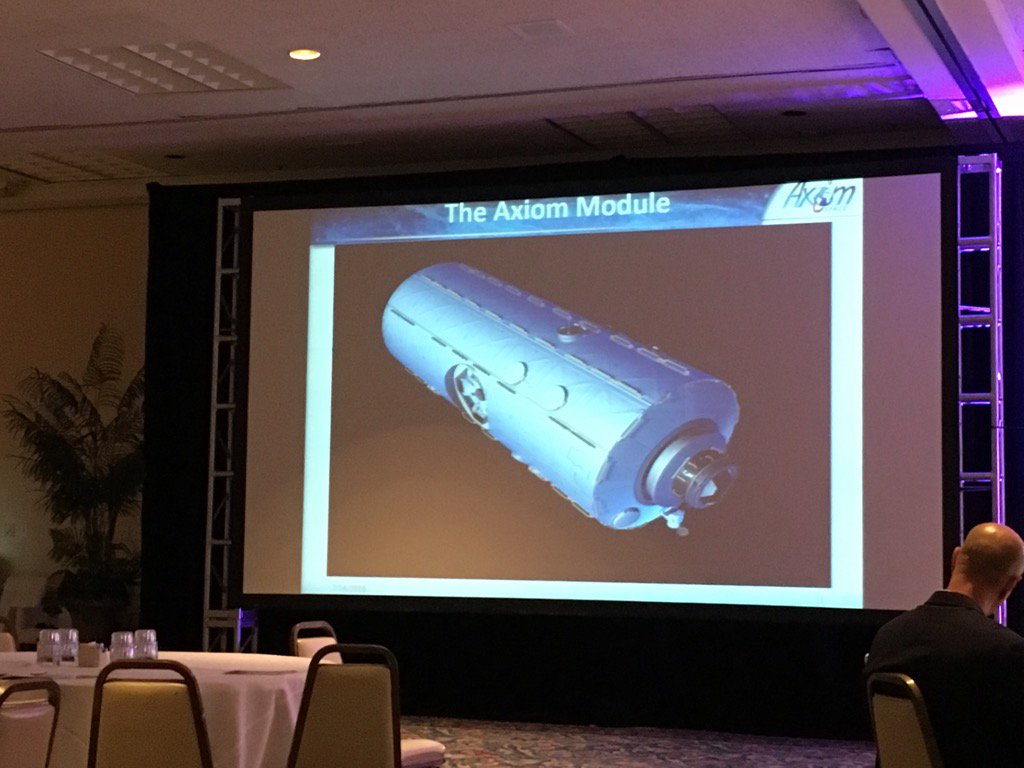
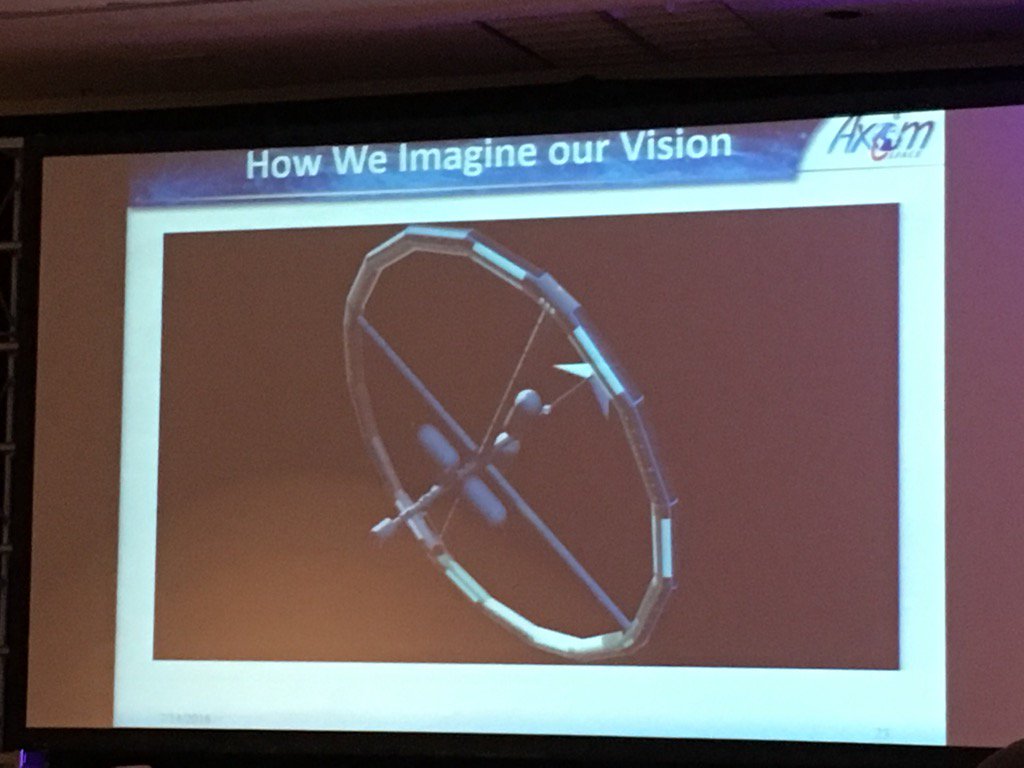
To create a real space settlement, it is necessary to develop internal systems to ensure and protect against radiation and foreign objects, to create artificial gravity. At the current level of technology development, this will cost a huge amount of resources.
Let's take a look at how scientists and fiction writers of the past imagined such settlements, and what projects mankind can realize in the near future.
')

Frame from the film "Interstellar"
Fantasy
In 1869, the American writer Edward Everett Hale for the first time in the literature described the space settlement. In the story, published in the monthly magazine The Atlantic, he talked about a spacecraft sent to near-earth orbit in the form of a brick sphere with a diameter of sixty meters. Accidentally, this artificial satellite of the Earth, created to help mariners in navigation, was sent into space with people. And these people survived, forming the first space colony. The work is called "Brick Moon".

Fifty years later, Konstantin Tsiolkovsky published a book, Out of the Earth, about cosmic colonists. He first spoke about the need for plant growing in space and on other planets , described the method of creating artificial gravity, and said that it would solve most of the medical problems of space travelers.
 Tsiolkovsky used the concept of "air settlements". He believed that the population of the new planets would live on the planets only a part, and a belt of cars, vehicles and buildings would form around them — a moving swarm in the form of a ring. For the construction of settlements, he proposed to use the material of the planets and asteroids. The settlements will consist of station modules, gradually being tied together like a necklace of beads. On Earth, modules will be built and tested, and then sent to orbit. “The rockets were built and equipped according to the pattern already described. Thousands of them flew from the Earth one after another - with a roar, thunder, throwing out bundles of light and causing the crowd to delight. At first, only scientists, technicians, engineers, and craftsmen were sent to them: the people are exceptionally healthy, young and energetic, all builders, ” wrote Tsiolkovsky.
Tsiolkovsky used the concept of "air settlements". He believed that the population of the new planets would live on the planets only a part, and a belt of cars, vehicles and buildings would form around them — a moving swarm in the form of a ring. For the construction of settlements, he proposed to use the material of the planets and asteroids. The settlements will consist of station modules, gradually being tied together like a necklace of beads. On Earth, modules will be built and tested, and then sent to orbit. “The rockets were built and equipped according to the pattern already described. Thousands of them flew from the Earth one after another - with a roar, thunder, throwing out bundles of light and causing the crowd to delight. At first, only scientists, technicians, engineers, and craftsmen were sent to them: the people are exceptionally healthy, young and energetic, all builders, ” wrote Tsiolkovsky.I thought Tsiolkovsky and about space agriculture . He described the conservatories in Starfish Goals as follows: “Imagine a long conical surface or a funnel, the base or wide opening of which is covered with a transparent spherical surface. It is directly facing the Sun, and the funnel rotates around its long axis (height). On the opaque inner walls of the cone there is a layer of wet soil with plants planted in it. ”

The manuscript of K.E. Tsiolkovsky "Space Travel Album", 1933. A source
Austrian Herman Potochnik published at the end of 1928 under the pseudonym Noordung the book “The Problem of Traveling to World Space”. Potochnik described in detail the orbital station with artificial gravity, its assemblies, equipment, including the water treatment system, described the structure of the spacesuit, its thermal insulation, life support installation, breathing and radio communication. It is worth saying that in the 1920s the miniature radio transmitter was fantastic.
Below is an illustration from Potochnik’s book, the space station “Wohnrad”, whose name was translated into Russian in 1935 as “Wheel for housing”. A torus-shaped module with a diameter of 20 meters imitates gravity due to rotation. The station is equipped with a mirror-heat exchanger of the power plant. According to Noordung, at this station it will be possible to deal with the mapping of hard-to-reach areas of the Earth, to observe possible disasters and hazards. The station will also provide communication.
For energy, the station uses a parabolic mirror that concentrates solar energy and turns it into electrical energy. The same equipment is used to communicate with the Earth using light and radio signals.
It's amazing how accurately Potochnik described the life of future astronauts. He wrote that they would have to give up washing, that only rubbing with wet sponges or towels would be possible. In addition, he believed that important muscle groups, due to their prolonged non-use, would weaken and stop serving, but "this could be successfully counteracted by systematic exercises of the muscular system."

In 1929, John Desmond Bernal designed a station project in which people would live in a sphere filled with air with a diameter of 500 meters. At the station could live up to thirty thousand people.
A sphere spinning at a speed of 1.9 revolutions per minute would provide gravity of 1g.


American physicist Gerard O'Neill described the colonization of space in his book The High Frontier of 1975. His station consisted of two cylinders 8 kilometers in diameter and 32 kilometers long, connected by a bearing system. Rotating in opposite directions, the cylinders inside them created artificial gravity - again using centrifugal force. This station, he called the "Island III". In addition to this project, he described “Island I”, a rotating sphere of half a kilometer diameter, where people could live in the equatorial region — this was a modernized version of the Bernal sphere. The project "Island II" was a sphere of 1600 meters in diameter.
Building a station of this size would require a huge number of spacecraft launches. In the 1970s, taking into account the experience of the space industry, it was already possible to calculate. Therefore, O'Neill suggested using materials transported from space - including from the moon. He offered to send cargoes to the construction site with the help of an electromagnetic catapult .
On the inner surface of the cylinder it will be possible to place forests, animals and birds, lakes and rivers. First, it will be necessary to spin the cylinders for three years, a constant power of 360 MW will be needed. In the cylinders it will be possible to control the seasons, control the temperature of the climate. The professor has calculated that the mass of the station will be 500,000 tons, and 2,000 people will build it.
In the film Interstellar, a large-scale space station is presented, corresponding to the idea of an O'Neill cylinder.



Below is the cover of the magazine "Technology - Youth" for 1965. In this figure, we see some kind of O'Neill project developed after a few years. In Arthur Clarke’s 1973 Rama Date book, the author describes a space object within which people find oxygen, water, and all the conditions necessary for human habitation.

Students at Stanford University in 1975 offered NASA a project of a space settlement in the form of a torus. He was called so - Stanford torus . This project is based on the ideas of Herman Potocnik. The center of the base was a fixed mirror for reflecting sunlight on a rotating ring of secondary mirrors, which provide people living in a rotating greenhouse with light from inside the rotating torus.
The rotation of the torus should provide artificial gravity of about 0.9-1g, which will avoid medical problems associated with microgravity. Given the diameter of such a ring, it will be possible not to worry about the strength of Coriolis, because of which astronauts will rock when moving in the direction of rotation of a similar object. "Spokes" of this huge wheel will be used to move people and goods to the axis and back. The “hub” will be ideal for a spacecraft receiving docking station, since there will be no artificial gravity here, this is a fixed module.
According to the project, such a station should accommodate ten thousand people with a torus diameter of 1.8 kilometers. At the station it will be possible to place farms and forest park zones, that is, to create an artificial ecosystem suitable for long-term human habitation.




In feature films and animated films one can find many examples of space stations in which gravity is recreated using centrifugal force. In a series of novels by Arthur Clark, "Space Odyssey" described "Discovery One", within the scope of which there is a "carousel" with a diameter of 11 meters, rotating at a speed of about five revolutions per minute. In the anime series Planetes, the ISPV-7 space station has huge rooms with familiar earth gravity. The living area and the area for crop production are located in two tori rotating in different directions. In the film Martian, the ship Hermes has a rotating torus in the center.
But the cost of such decisions at the moment remains cosmic. Enthusiasts calculated how much it would cost to send components into space for the ship "Elysium" from the movie of the same name. To put into orbit a million tons of cargo, you need to make 18,382 SpaceX Falcon launches, which will cost $ 1 trillion 650 billion - this is one hundred annual NASA budgets.

Reality
For the first time, astronauts were sent for a long stay in space in 1971 to the long-term orbital station Salyut. The station was in orbit for 176 days, after which, on October 11, 1971, at the command of the MCC, it descended from orbit and was submerged in the Pacific Ocean.
The astronauts at the Salyut-1 orbital station lived and worked mainly in the working section, which is a cylinder with a diameter of 2.9 meters and a length of 3.5 meters, connected to a cylinder with a diameter of 4.15 meters and a length of 2.7 meters. Inside these cylinders a frame was installed, forming a square with an internal cross section. The frame was covered with panels painted in different colors so that the astronauts could recognize the conditional floor, walls and ceiling.
A control post, a rest area, storage and eating places and sleeping places were placed in a small-diameter cylinder. The large-diameter cylinder had scientific equipment, exercise equipment for sports, and a shower. In a separate compartment was a space toilet .
The station was intended for the stay of three astronauts. Unfortunately, the work of the station was associated with tragedy: out of 176 days, only 23 days were people on it, and they died while descending on the Soyuz-11. The rest of the time the station worked in unmanned mode.
The station demonstrated the bottlenecks of the project, which were later corrected in subsequent “Salutes”. The second DOS in 1973 was not operated in a manned mode, but Soviet and foreign cosmonauts worked at stations from Salyut-3 to Salyut-7 until 1991, with the last station orbiting 3216 days, of which 816 days with astronauts on board. This series of stations served as the basis for the Mir orbital complex and for the Russian segment of the International Space Station.
The orbital complex "Mir" has been working for not about nine, but fifteen years. In this case, the originally planned service time was five years. One hundred and four cosmonauts from twelve countries visited the station.
Although orbital stations cannot be called space colonies, they are necessary for the development of future settlements, including the creation and refinement of life support systems. The stations allow scientists to identify the best practices of space architecture. One of the most important techniques is station modularity.

On the body of the station "Salyut-1" flaunted the name "Dawn". The station was called differently, having learned that the name is occupied by a Chinese satellite
Now the International Space Station is moving around the Earth. An inflatable module with artificial gravity was developed for it, but it was never put into practice. One of the reasons for this is that such a module would deprive the ISS of meaning, because the station is a microgravity laboratory. The module in its implementation would be a demonstration prototype of the ship Nautilus-X .
Nautilus-X was presented in 2011 as a vehicle for a long stay of a team of six people in the exosphere. The developers assumed that the construction of the ship would cost 3.7 billion dollars and take 64 months.

The concept of an inflatable module with microgravity for the ISS.

Nautilus-X Concept
Today, the development of space housing has already entered into the programs of some universities. The International Center for Space Architecture, Sasakawa, based at the University of Houston offers a master's program in the specialty "Space Architecture". International Space University in Europe explores the architecture of spacecraft. The Technical Committee on Space Architecture works on the basis of the American Institute of Aeronautics and Astronautics.
In the near future, we are waiting for space settlements, far from shown in science fiction films. A commercial module may appear on the International Space Station. It may be inflatable, and will be used for scientific research and space tourism. Speech about the creation of artificial gravity is not going, it will just be another module that differs from the existing ones only by purpose and cheating .
One inflatable module on the ISS has already been deployed , it was developed by Bigelow Aerospace. Such a module is nine times lighter than a conventional aluminum module. Put it into orbit easier than the standard, which is displayed in space in parts. The ability of the BEAM module to withstand the conditions of outer space and maintain a comfortable human environment inside is being tested now.
Robert Bigelow, founder of Bigelow Aerospace, made a fortune in the hotel business and began to dream of an orbital hotel. On July 12, 2006, the company launched the Genesis I module, which successfully doubled in a 500 km orbit. A year later, after him, Genesis II was sent with 22 video cameras and various items using the program “Fly your stuff”, in which any person could put a small item aboard the module for $ 295. And after that, in 2016, the inflatable module was deployed on the ISS. On June 6, 2016, the module was entered by the Russian cosmonaut Oleg Skripochka and the American astronaut Jeffrey Williams and placed equipment for measuring parameters in it. Only for a few hours a year, people will enter the inflatable module; the rest of the time, the equipment will monitor its condition.

In 2016, the Russian company Orbital Technologies planned to start operating a space hotel, a commercial space station where alcohol would be banned. Judging by the lack of news on this topic over the past couple of years, while the program remains in the project.


Similar fate and the American Excalibur Almaz. In 2012, a private company gave a presentation to the British Royal Aeronautical Society and announced that in 2015, it would launch tourist space flights flying around the moon. The plans were to offer customers a weekly flight at the station, assembled from decommissioned Soviet modules . Not yet.

The project closest to science fiction is offered by an American company headed by Mike Saffredini, a former NASA employee responsible for the work of astronauts at the International Space Station. Stinger Ghaffarian Technologies plans to install a commercial module on the ISS. This module will be the basis for a new space station in the future. To implement the project, in January 2016, Axiom Space LLC was registered. The module is planned to be launched in 2020-2021. But the most interesting thing is that by 2040-2050, the new space station will be a torus. It’s just not yet clear whether it will provide artificial gravity and how much the project will change by that time.


Source: https://habr.com/ru/post/369519/
All Articles